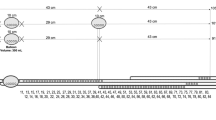Abstract
The existence of a sphincter at the rectosigmoid junction (RSJ) is controversial. Recent studies have demonstrated a high-pressure zone within the RSJ which responds to sigmoid colon or rectal contractions by relaxation or contraction, respectively. These findings suggest the presence of a ”physiological” sphincter at the RSJ. The current study investigated the anatomical and histological structure and the radiological picture of the RSJ in view of the possible existence of an anatomical sphincter at the RSJ and elucidating its function. The RSJ was studied in 28 cadavers (18 adults and 10 fully mature neonates) by dissection. A histological study of the RSJ was performed in 5 cadavers. Radiological examination using double-contrast barium enema was carried out in 50 healthy volunteers (mean age 44.2±14.4 years; 32 men, 18 women). The mucous membrane of the RSJ was found in folds forming a ”mucosal rosette” of a mean length of 2.8±0.9 cm in adult specimens and 0.7±0.2 cm in neonates. The distal end of the mucosal rosette was sharply delineated and in some specimens protruded into the rectal lumen as a small nipple, which was surrounded by a ”rectal fornix” on either side. The histological examination of the RSJ showed mucosal foldings with deep crypts surrounded by lymphocytic aggregates and marginated by muscularis mucosa. The circular muscle coat showed gradually increasing thickness towards the rectum. Nerve cells in the submucosa were located at three levels: in the vicinity of the muscularis mucosa, in the middle of the submucosa, and in the proximity of the circular muscle. Radiologically the opening of the sigmoid colon into the RSJ presented as a ring or crescent. Radiological striations representing the mucosal rosette were demonstrated. The RSJ appeared as a narrow contractile segment. The anatomical, histological, and radiological findings thus indicate that the RSJ is a segment which can be identified by its interior rather than outer aspect. The study suggests the presence of an anatomical sphincter at the RSJ which seems to regulate the passage of stools from the sigmoid colon to the rectum.
Similar content being viewed by others
Author information
Authors and Affiliations
Additional information
Accepted: 9 September 1999
Rights and permissions
About this article
Cite this article
Shafik, A., Doss, S., Asaad, S. et al. Rectosigmoid junction: anatomical, histological, and radiological studies with special reference to a sphincteric function. Int J Colorect Dis 14, 237–244 (1999). https://doi.org/10.1007/s003840050217
Issue Date:
DOI: https://doi.org/10.1007/s003840050217




